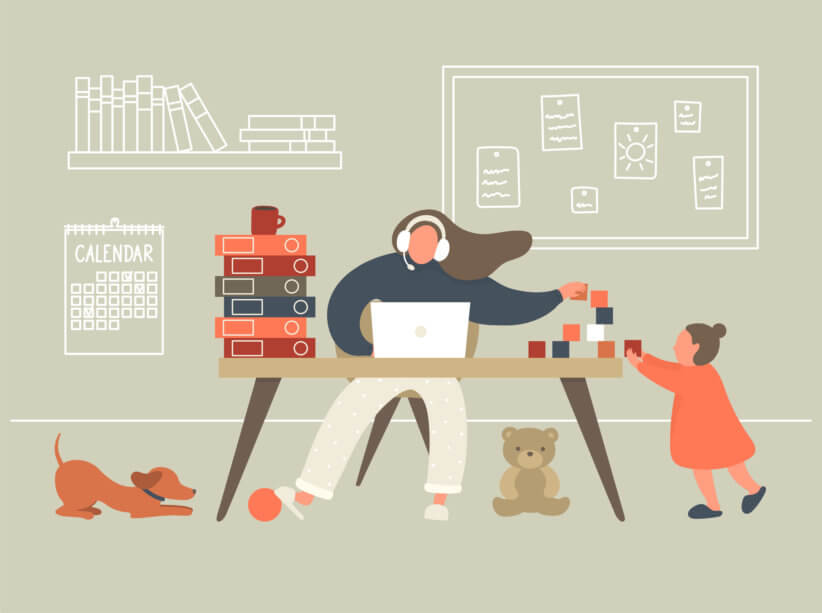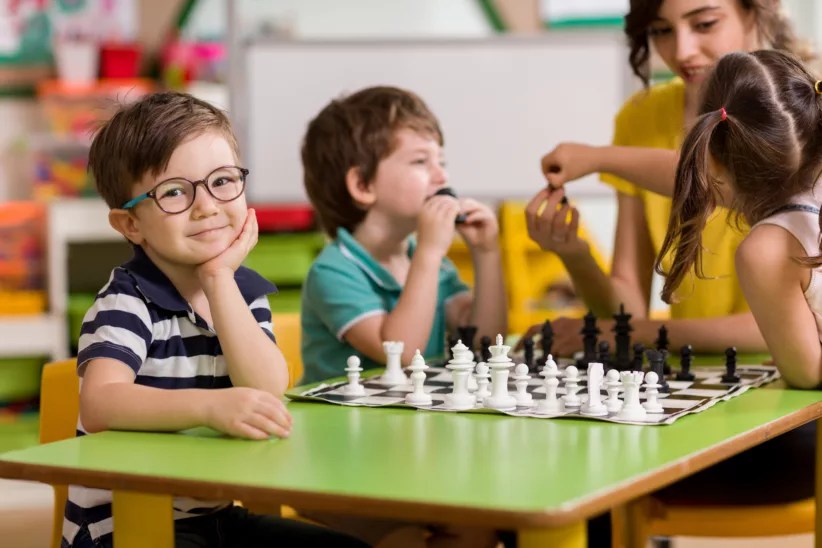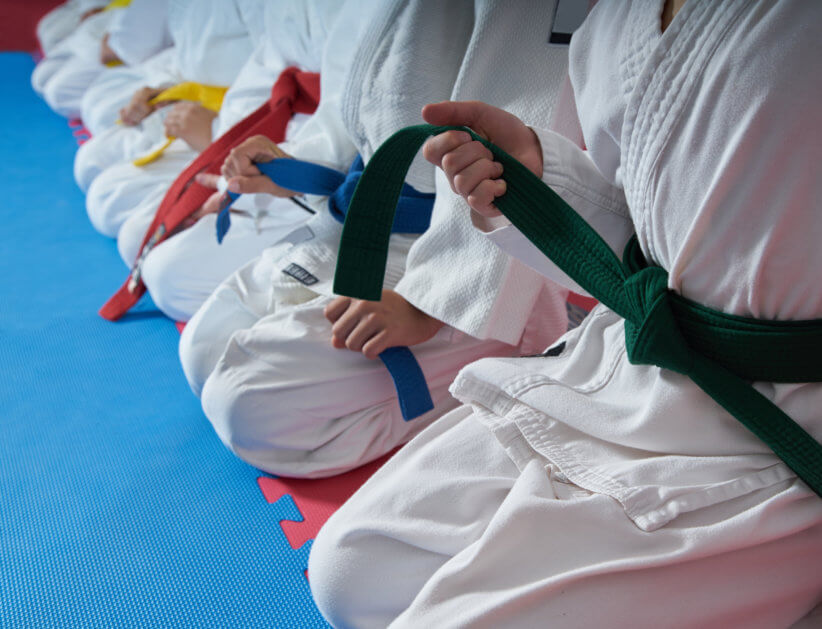Regular exercise should be a part of every educational and therapeutic curriculum for youngsters on the autism spectrum, but vigorous physical play is often missing from their daily routine. The hurdles on the way to that goal have to do with the current, myth-riddled state of physical education, fitness, and physical culture in the U.S.
Here, I dispel some of the myths preventing our children with autism from achieving the physical fitness they deserve.
Autism fitness myth 1: Children “naturally” know how to move
A neurotypical toddler can perform a perfect squat — feet planted firmly on the ground, head aligned with the spine, knees slightly out, and torso at about a 45-degree angle. Five years later, the child has difficulty squatting and rounds the back to pick up an object. This may be an indication of some weaknesses in the major muscle groups, lack of trunk stability, and a few other less-than-desirable physical issues.
Is this movement deficit supposed to happen? Or is there another problem?
Movement — including strength, agility, balance, coordination, speed, and endurance — is a set of skills that must be continuously taught and reinforced as a child grows.
Research shows a high incidence of movement deficits (poor ability to utilize and control muscular systems) in young people on the autism spectrum. It may be evident in gait patterns (walking, navigating stairs), poor posture, or trunk stability. Sedentary lifestyle patterns (lots of sitting with little variety in physical activities and a lack of vigorous physical exercise) can exacerbate the movement issues in both neurotypical and autism populations.
Years ago, when children actually spent time on playgrounds, demonstrating the magical power to fall, have it hurt a little, and get back up, movement skills were honed through random and energetic play. Jumping, hopping, skipping, climbing, pushing, pulling, throwing, and all variations and combinations of these patterns ensured further development of both the muscular and central nervous system.
Physical play skills require development through teaching and practice. My method is based on “structured teaching to develop skills for randomness.” Children may explore, but there is a point where new abilities need to be initiated through instruction.
Autism fitness myth 2: Fitness and sports are the same thing
Fitness is general, and can be applied to many different areas and situations in life, from daily tasks to athletic endeavors. Sports are highly specified and the skill sets within them do not generalize or “cross over” much to other activities. Most of the athletes in my Autism Fitness program do not play a sport, nor do they want to.
Have you ever watched a little league baseball game? The kids stand in the field, then get up at bat three or four times, sit on the bench, and maybe throw the ball five times (and that’s if they are in the infield). Then the adults tell them how much exercise they got.
Individual sports (martial arts, yoga, fencing) are fine, but realize that these, too, are highly specific endeavors. Think of sports (individual or team) as branches on a tree. The roots and trunk of the tree are made up of general fitness and physical activity. Sports do not provide general ability, even at the highest levels. If you don’t believe me, my friend Carlo — the strength and conditioning coach for two Major League Baseball teams — will tell you how imbalanced (at least from a physical perspective) most single sport athletes are. Sports are not bad, but they do not meet all the physical needs of a child or adult.
Autism fitness myth 3: Kids with autism don’t want to be active
We generally do not enjoy things that we are not good at. Consider how many variations of physical fitness young individuals on the spectrum typically have access to — maybe sports, access to a treadmill (I applaud their escape-maintained behavior on this one), or a machine-based, weight-training program (boring, and offers great opportunities for injury and compensatory movement pattern development).
Many young people with autism have an aversion, or gravitate away, from vigorous physical activity because:
• They resist new activities and task demands that are out of routine,
• Motor deficits can make many of these activities difficult, especially when taught improperly,
• Movement has never been introduced in a way that is fun or meets the needs of the individual,
• Exercise programs have not been paired with reinforcement, including behavior-specific praise or secondary reinforcers (music, access to preferred activities).
Any of the above could be factors. My athletes find exercise fun and reinforcing, because they are presented with new and dynamic options for regular fitness activity.
Autism fitness myth 4: Some kids just can’t learn to exercise
Breaking any skill down to smaller increments helps the learner to master each step. Similar to math, science, reading, or any other cognitively based skill set, movement requires planning and appropriate implementation. I’ve had athletes learn a push-up through breaking the exercise down into eight discrete steps. While mastering each step, the athlete is also growing stronger and more confident.
Most often, the environment is not conducive to the athlete succeeding and this is why the athlete “fails.”
In Autism Fitness, we do all sorts of animal movements, swing giant ropes, throw big medicine balls, and slam SandBells. It is new and exciting for many of my athletes, while a few take more time to find it reinforcing. The key is addressing the major movement patterns (pushing, pulling, bending, rotation, and locomotion) and finding a way to teach it while having fun.
Often, behavioral and cognitive issues have to be addressed with individual athletes. I’ve started fitness programs for children that include a 10-second “exercise” period, followed by 10 minutes of reinforcing activity. Over time, as tolerance for the new exercise activities increase, we can engage in fitness longer and more regularly.
Saying “Some kids can’t exercise” is on par with saying, “Some kids just deserve a higher likelihood of cancer and Type II diabetes.”
Autism fitness myth 5: An exercise program needs to be highly structured with costly equipment
The play aspect of fitness is something that we are desperately missing, both in youth and adult fitness. There really should not be much difference (other than volume and intensity) between kid and adult fitness. With my athletes on the spectrum, we’re performing the same movement patterns that I would include in my own training/play sessions.
Many physical education and fitness programs are far too rigid without accomplishing the most critical goals: getting young individuals to move well and enjoy doing it. Teaching in a structured manner is important for developing the pre-requisite and basic movement skills, but movement exploration and discovery is the ultimate goal.
Expensive machines and video game system “fitness” programs are the antithesis of what actual fitness should be. Standing on a board and watching a video is recreational at best, no matter what the box tells you. It is not true, skill-building fitness, and it does not do much to promote strength, confidence, self-esteem, or socialization. Machines, such as treadmills or ellipticals, are simply expensive coat racks.
The vast majority of equipment I use is inexpensive, can fit in the trunk of a car, and provides much more fitness benefit than any system sold on TV. My short list includes: Hyperwear Sandbells, swinging ropes, medicine balls, cones, and small hurdles.
• • •
Major media is citing an “obesity epidemic” for the nation’s youth — special needs populations included. The obesity issue is a symptom of a greater problem, namely inactivity and sedentary lifestyles combined with poor nutrition.
While the reactive approach means dealing with the possibility of certain types of cancer, Type II diabetes, postural distortions, inhibited cognitive function, and lower self-esteem, the proactive approach — physical fitness — opens the gateway towards new abilities, confidence, and long-term health. Which slide would you go down?
Eric Chessen, MS, is the founder of Autism Fitness. An exercise physiologist with extensive training in ABA and Best Practices for education, Chessen works with his athletes, consults, and provides workshops around the U.S. and internationally. More information is available at www.AutismFitness.com.





















